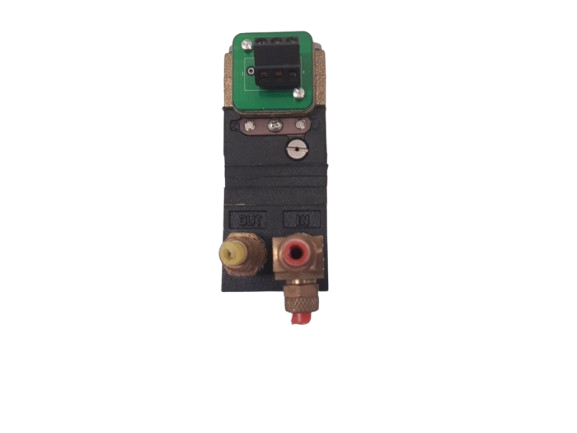Industrial automation changes how manufacturing, production, and the rest of other industries work in terms of making things more efficient, accurate, and safe. Among the dominant technologies that revolutionized this is through transducers. They are crucial tools in converting parameters into electrical signals that can be easily processed through control systems and devices. In this blog, we are going to discuss the many benefits of transducers in industrial automation, including their contribution towards accuracy, efficiency, and general system performance.
What Are Transducers?
Benefits begin after understanding what transducers are. A transducer is something that converts one form of energy into another. Transducers transform physical parameters including temperature, pressure, flow, and force into industrial automation electrical signals like voltage or current. The resultant electrical signal then can be further processed and acted upon an automation system; the machines and devices make necessary adjustments according to real-time data which is up-to-date.

For example, a pressure transducer may measure the pressure in a pipeline and transduce it to an electrical signal that can then be monitored by the control system. Similarly, a temperature transducer takes temperature measurements that are transduced into electrical signals for temperature controllers to change the processes.
Transducers are pretty critical components in the automation chain because they let machines "feel" their environment and then change appropriately.
1. Higher Accuracy and Precision
More Accuracy and Resolution In the industrial automation system, transducers provide more accuracy and resolution. An automation system, especially with a complex manufacturing process, guarantees accurate measurement that will in turn help the product quality and reduce errors. They allow this in transducers to provide fairly accurate information for regulation of machines and processes. For example, temperature transducers can be used for proper temperature machine conditions such that it will not overheat or underheat, causing damage to the product, just like pressure transducers ensure hydraulic systems are under the correct pressure to run consistently. In industries involving pharmaceutical, aerospace, and automotive and where quality is of utmost concern, the transducers ensure that every manufacturing process must meet the criteria. This decreases defects, rework, or waste and increases a higher quality finished product.
2. Improved Performance
Transducers make automated systems in industrial fields more effective because they enrich the monitoring and regulation processes. When automating these systems, current data is attained, which is manipulated to maximize on energy, ideal resource allocation or the highest rate of production. For instance, an automatic conveyor system will have its load transducer measuring the weight carried and can adjust the speed or even the operation to prevent overloading in order to ensure smooth performance. In industrious applications like boilers and furnaces, temperature transducers measure the heat levels such that they can operate at optimal levels of doing away with wastage of energy, thus minimizing the cost of running. In addition, transducers enable the automation of tasks that would otherwise be intervened by man. This will reduce human errors, increase processing speed, and minimize constant oversight. Improved accuracy and increased efficiency are some of the reasons why the industries have progressively adopted automation technologies.
3. Real-Time Data for Better Decision Making
The data that transducers provide is in real-time, allowing for the immediate analysis and making decisions based on that. It is very essential to industries where the speed and response are considered essential to control systems. Real-time data from the transducer allows the control systems to detect changes in the process parameters, adjust the system, and consequently reduce downtime, thus preventing a problem before it becomes serious. For instance, in a manufacturing plant, temperature, pressure, and flow monitoring transducers can forward their information directly to a central control system. Upon the set limit being exceeded, the system can activate the cooling mechanisms or shut down parts to avoid further damage. This level of response maximizes industrial automation systems in operating at optimal levels for failure-free operations with few prospects of expensive failures.
4. Enhanced Safety
Safety is one of the most important issues in industrial environments, and the transducers play a vital role in improving the safety of automated systems. Most industrial processes are hazardous, for example, high pressure, extreme temperatures, or toxic gases. The transducers monitor these parameters in real time, and such data is useful in preventing accidents, protecting both the workers and the equipment. For instance, pressure transducers can note any abnormal buildup of pressure inside a vessel or pipeline. Hence, they can, in time, send an alarm or activate safety measures before the pressure becomes hazardous. Temperature transducers monitor overheated equipment and prevent the outbreak of fire or damage from overheating of equipment. Analogously, gas detectors can utilize the use of transducers to sense the concentrations of gases and consequently activate ventilation systems should the concentrations approach dangerous levels. Continuous monitoring and in-situ transducer feedback help to prevent the possibility of accidents by avoiding hazards which might result in further injuries before they arise at the workplace.
5. Minimal Amounts of Energy Used
Energy efficiencies are now being considered in industries across the world, and transducers are great applications that help save energy by ensuring the operation of systems within acceptable parameters. Most processes involved in industrial automation, such as heating, cooling, or pumping, consume loads of energy. Automation systems make real-time adjustments to reduce energy use without impairing optimal performance by using transducers to monitor parameters such as temperature, flow, and pressure. For instance, temperature transducers in heating or cooling systems can control the energy consumed in the process to reach the desired temperature. Pressure transducers in air compressors can work through self-regulation by way of adjusting the parameters of the system, thus consuming lesser amounts of energy when their values already fall within the range that is required. These methods reduce the costs of operational processes as well as the destructive effects industrial processes have on the environment.
6. Maintenance and Troubleshooting Simplification

The use of transducers also makes maintenance and troubleshooting of automated systems easy. In real-time data, operators are able to find out the problem in the system quickly and act before it is too late. For example, when a transducer measures an abnormal temperature, pressure, or flow rate, it may alert operators of problems like worn-out parts, leakage, or malfunctioning systems. The earlier defects can be detected, the sooner there is an indication that may indicate less time the equipment spends shut down or possibly being more cost-effective for a high-cost repair. Transducer data further help maintenance staff forecast when parts or systems need repairs and schedule better preventive maintenance; hence, prolong the duration during which equipment works effectively without surprising breakdowns.
7. Economical
The cost of installing transducers appears very costly at first, but in the long run, most such expenses have a tendency to outweigh those initial costs by leaps and bounds. Efficiency, savings in energy, greater safety, and ease of maintaining systems all come together to produce tremendous economies. In addition, since transducers help automate processes and reduce the need for manual intervention, they can also reduce labor costs. Since automation systems can operate independently with minimal human involvement, manufacturers can reduce their staffing requirements while maintaining high productivity levels.
8. Scalability and Flexibility
Another important advantage of transducers in industrial automation is scalability and flexibility. Adding transducers to existing systems is easy, and companies can scale their automation efforts according to their needs. As the business grows, new sensors and transducers can be added to monitor additional parameters, adapt to new processes, or expand the system's capabilities. Transducers' flexibility also means they can be used in any industry and any application. Transducers can, therefore, find their way into manufacturing, the automotive industry, energy, or pharmaceuticals because they can adapt to each of these sectors. They are the most important tools for industrial automation.
To put it simply, transducers are one of the basic components of an industrial automation system and offer various advantages. In terms of precision and efficiency up to safety and energy saving, the transducers guarantee that industrial processes function efficiently, safely, and in a cost-effective manner. The relevance of transducer application will rise with the trend of automation of modern industries since these units are used as a means of optimizing performance and reducing operational costs while ensuring reliability in the system. With the advent of transducer technology, industries will be able to fully take advantage of the benefits of automation, developing smarter and more efficient systems that answer the demands of modern society.





Validate your login
Sign In
Create New Account